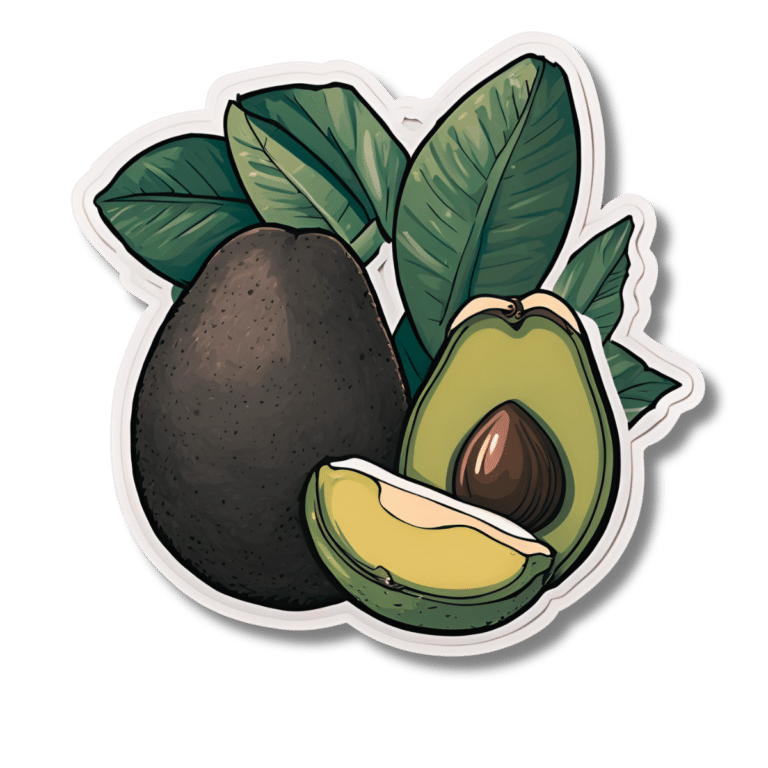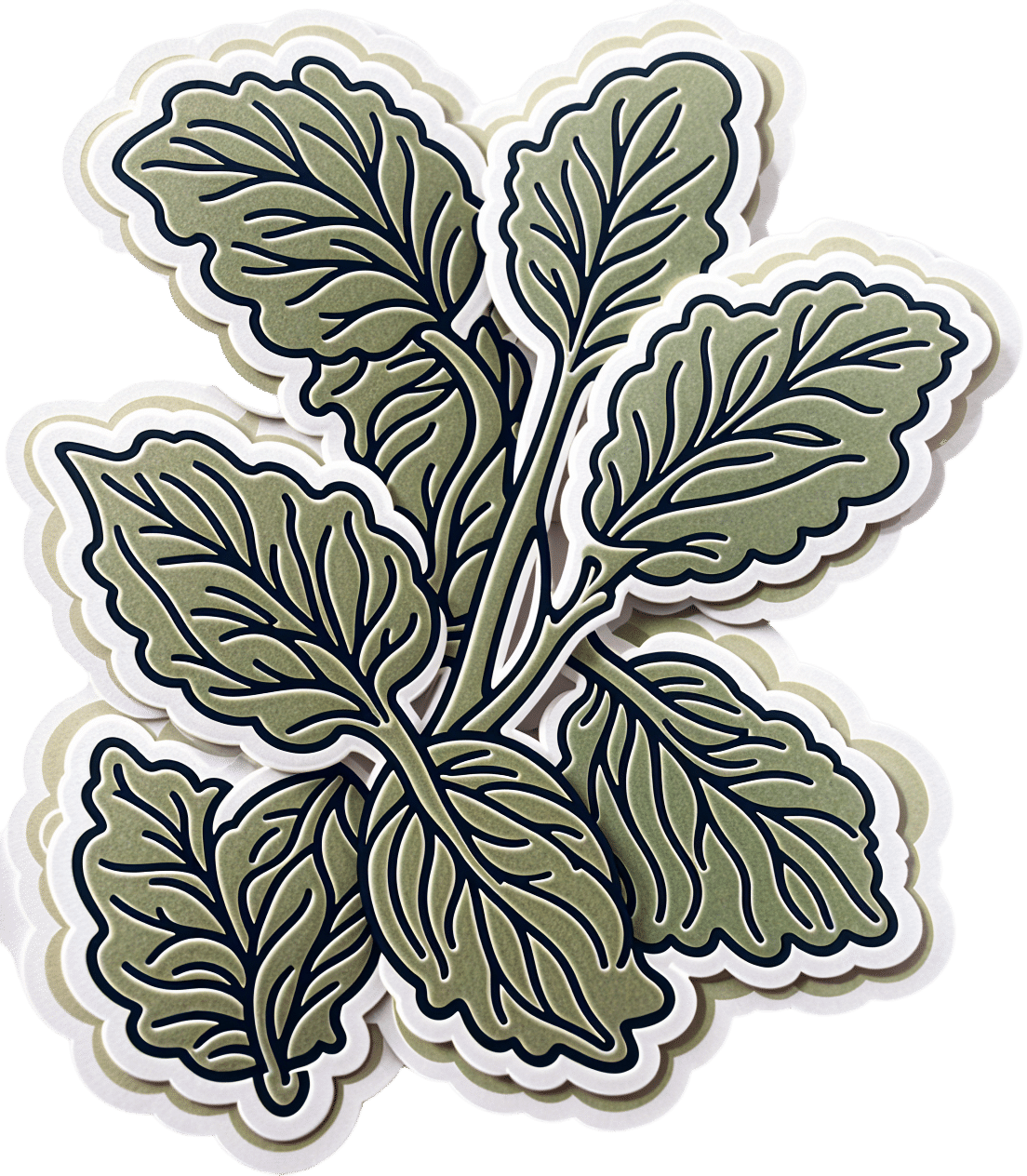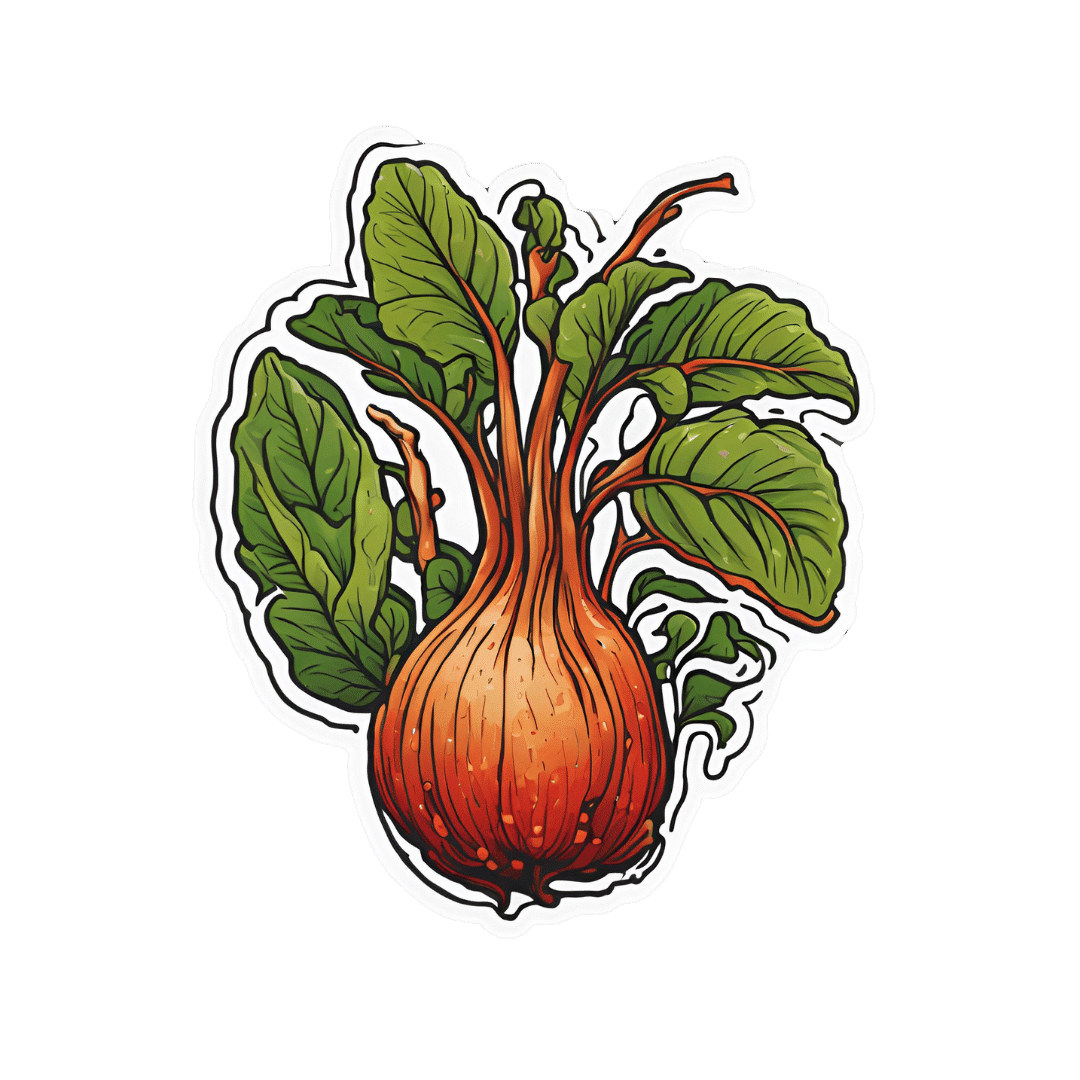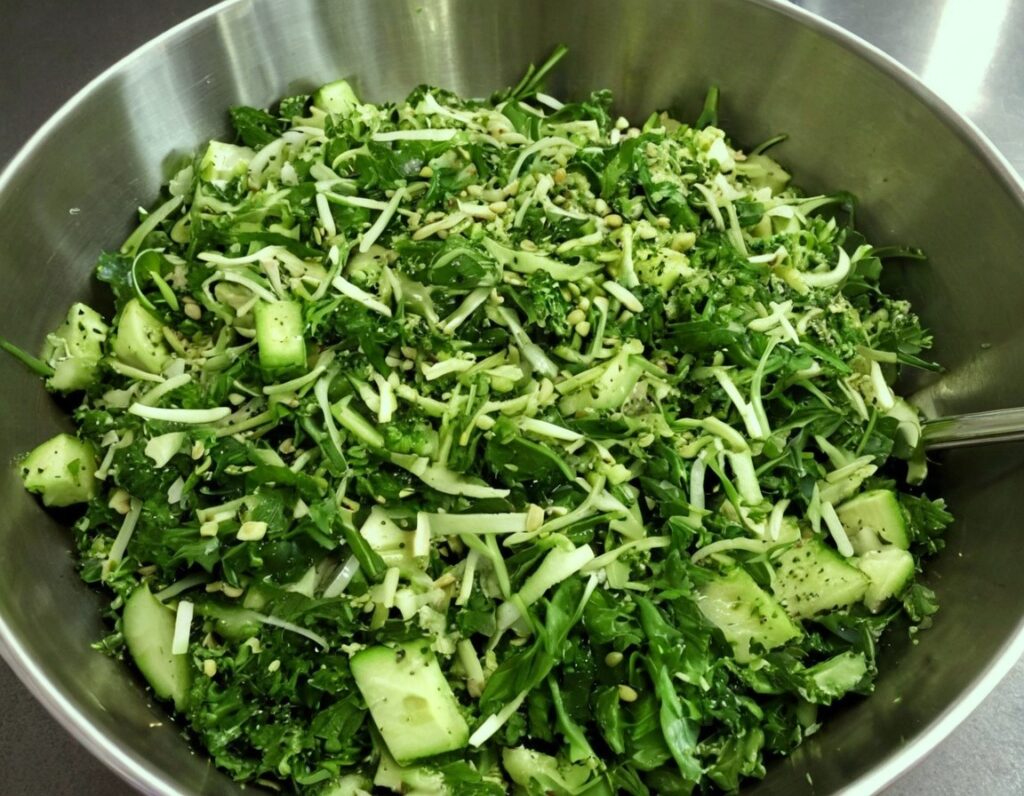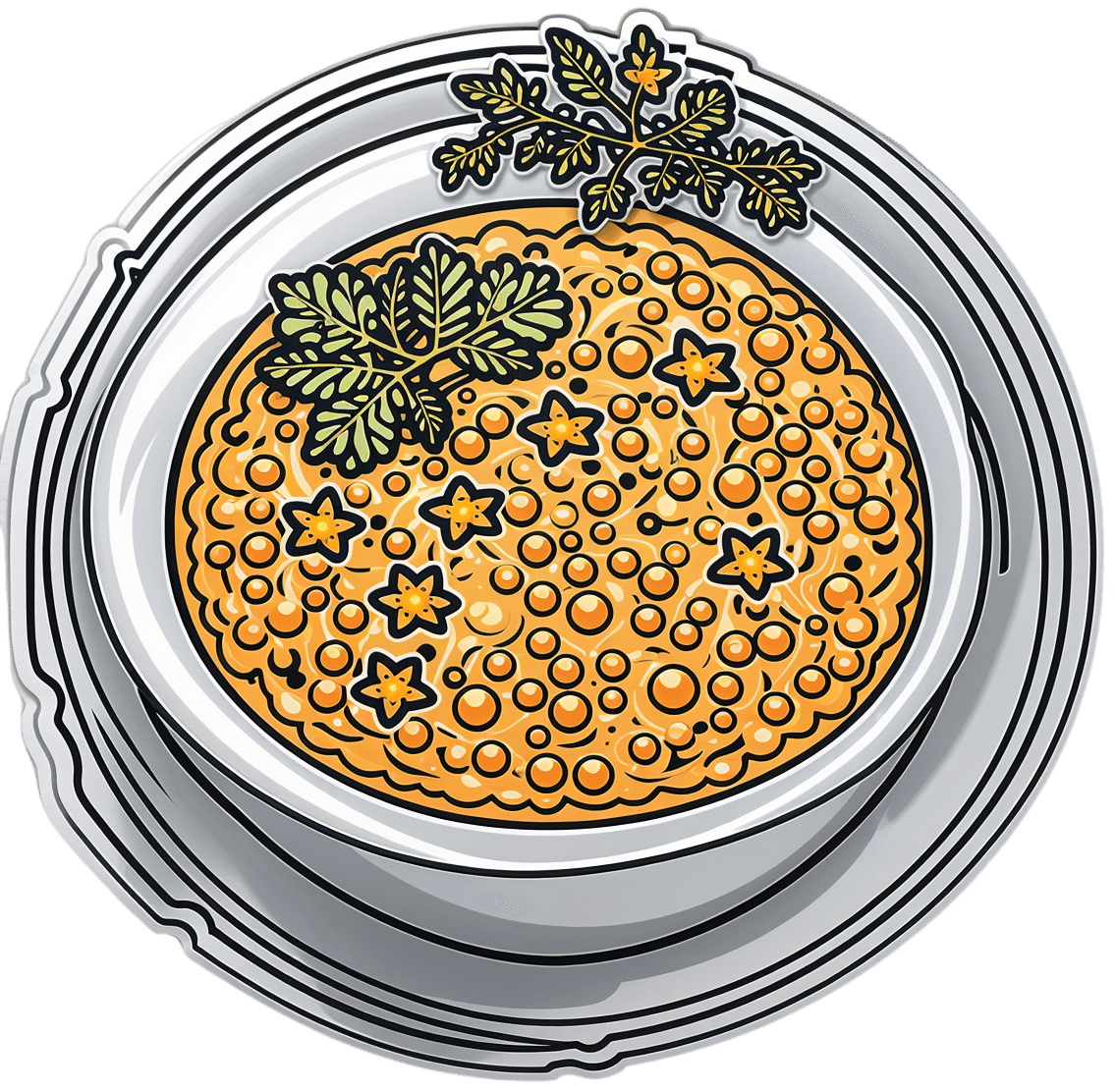
Delicious Daily Daal
10almonds is reader-supported. We may, at no cost to you, receive a portion of sales if you purchase a product through a link in this article.
You’re not obliged to eat this every day, but you might want to. The reason we called this one this, is because it’s a super simple recipe (don’t be put off by the long ingredients list; it’s mostly spices making it look long) which, after you’ve done it a couple of times, you could practically do it in your sleep quickly and easily.
The name “lentil daal” is a bit like “naan bread”—a redundant tautology repeated more than once unnecessarily, but it helps for international clarity. The dish is usually served with naan, by the way, and rice. We don’t have room for those today, maybe we’ll do them another day; for now, you can just cook rice how you normally do, and buy naan if necessary.
Writer’s note: I love strong flavors; many people don’t. For this reason I’m going to give a “basic” version. Please feel free to multiply the spices if you feel so inclined. Where I give “one teaspoon” of a spice below, I’d use a tablespoon at home. Chili peppers can vary in heat a lot even within the same type, so what I do for any given batch is taste one (raw), judge the heat, and use an appropriate number of peppers accordingly. If you don’t want to do that, I suggest just guessing low (as per the instructions below) and if you find at the end you want more heat, you can always stir in a little hot sauce. I know that sounds heretical, but at the end of the day, the primary goal of cooking is to have the meal you want at the end of it.
You will need
- 1 1/2 cups red lentils
- 1 large onion, chopped
- 1 large bulb garlic, minced
- 1 oz ginger, grated
- 2 hot peppers (e.g. serrano), chopped
- 1 tsp ground cumin
- 1 tsp ground coriander
- 1 tsp ground turmeric
- 1 tsp garam masala (this is also ground, but it doesn’t come any other way)
- 1 tsp chili flakes (omit if you’re not a fan of heat)
- 2 tsp cracked black pepper
- 1 tsp salt ← I wouldn’t recommend multiplying this one unless later, to taste. In fact, instead of 1 tsp salt I use 2 tsp MSG, which has less sodium than 1 tsp salt. But “1 tsp salt” is the “easy to find in the store” version.
- 2 large or 3 small tomatoes, chopped (or 1 can chopped tomatoes)
- 2 shallots, thinly sliced
- 1 tsp cumin seeds
- 1 tsp mustard seeds
- 1 tsp coriander seeds
- 1 tsp black peppercorns
- 1 lime
- 1/2 cup fresh cilantro, or if you have the “that tastes like soap” gene, parsley, chopped
- Coconut oil for cooking (if you don’t like coconut, consider springing for avocado oil—if you use olive oil, it’ll add an olivey taste which changes the dish a lot; not inherently bad, but it feels a lot less like traditional daal; seed oils are less healthy and we don’t recommend them; ghee is a traditional option and not bad in moderation, but not as healthy as the oils we mentioned first)
- Water for cooking the lentils
Method
(we suggest you read everything at least once before doing anything)
1) In a saucepan, boil water and add the lentils; let them simmer while doing the next things.
2) Sauté the onions until translucent. This should only take a few minutes.
3) Add the garlic, ginger, and hot peppers, and keep stirring for another couple of minutes.
4) Add the ground spices (cumin, coriander, turmeric, garam masala) chili flakes, and cracked black pepper, as well as the salt or MSG if using (not both), and stir them in quickly but thoroughly.
For the next step, you may need to transfer to larger pan if your sauté pan isn’t big enough to take the volume; if so, that’s fine, the sauté has done its job and can have a rest now. If your sauté pan is big enough, just carry on in the same pan; this is perfect.
5) Add the lentils with the water you cooked them in (there might not be much water left now, as the lentils will have absorbed a lot of it; this is fine) as well as the chopped tomatoes.
6) Simmer until it has the consistency of a very thick sauce (you can add a splash more water here and there if it seems to need more). In the West it’s common to serve lentils “al dente”, but in the East it’s usual to (for dishes like this) cook them until they start to
7) Add the juice of at least 1/2 of your lime, or the whole lime if you feel so inclined.
8) In a pre-heated skillet, flash-fry the sliced shallots and the seeds (cumin, coriander, mustard, black peppercorns) at the hottest temperature you can muster. Don’t worry if the oil smokes; we’re only going to be at this tadka-making stage for a moment and nothing will stick provided you keep it moving. When the seeds start popping, it’s ready. Add it all to the big pan and stir in.
9) Add the cilantro-or-parsley garnish once you’re ready to serve.
Enjoy!
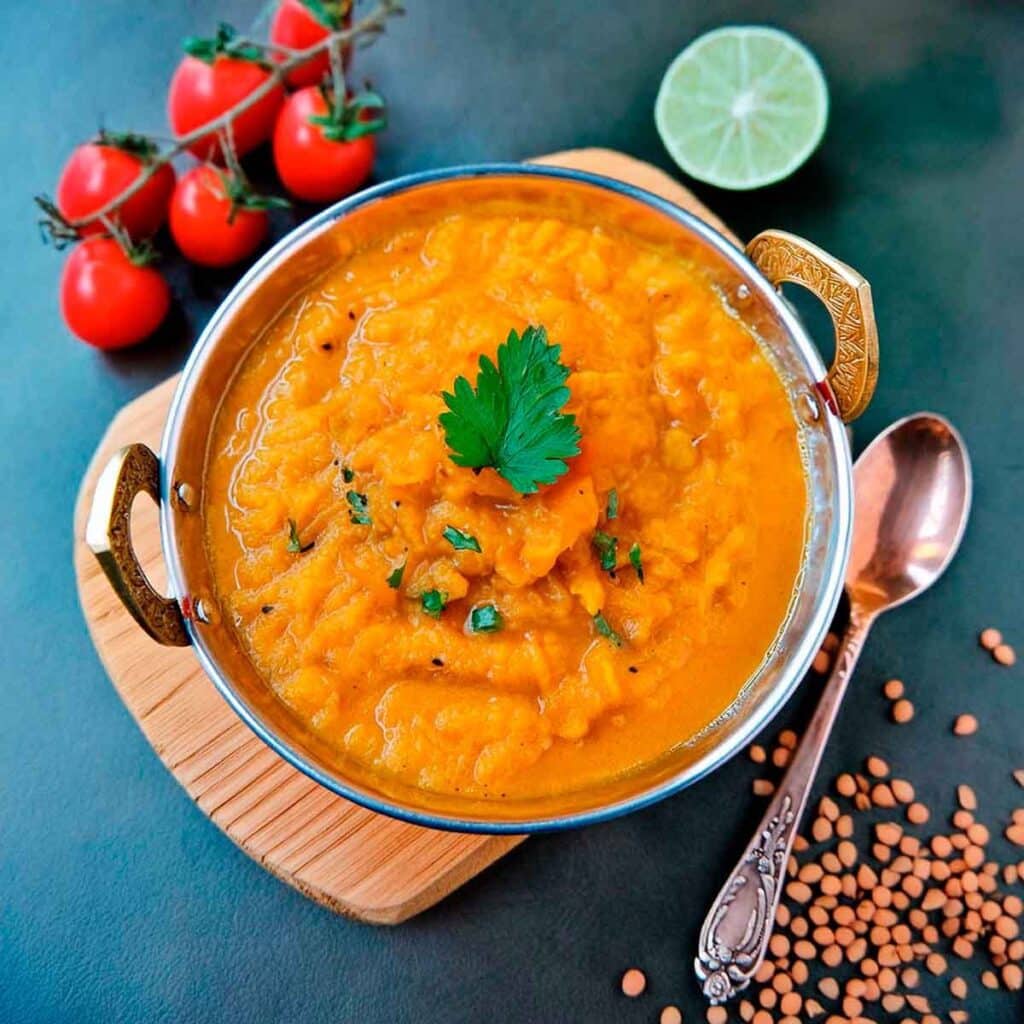
Learn more
For those interested in some of the science of what we have going on today:
- Why You’re Probably Not Getting Enough Fiber (And How To Fix It)
- How Much Spice Is Right?
- Tasty Polyphenols
Take care!
Don’t Forget…
Did you arrive here from our newsletter? Don’t forget to return to the email to continue learning!
Recommended
Learn to Age Gracefully
Join the 98k+ American women taking control of their health & aging with our 100% free (and fun!) daily emails:
-
How Useful Is Peppermint, Really?
10almonds is reader-supported. We may, at no cost to you, receive a portion of sales if you purchase a product through a link in this article.
Peppermint For Digestion & Against Nausea
Peppermint is often enjoyed to aid digestion, and sometimes as a remedy for nausea, but what does the science say about these uses?
Peppermint and digestion
In short: it works! (but beware)
Most studies on peppermint and digestion, that have been conducted with humans, have been with regard to IBS, but its efficacy seems quite broad:
❝Peppermint oil is a natural product which affects physiology throughout the gastrointestinal tract, has been used successfully for several clinical disorders, and appears to have a good safety profile.❞
However, and this is important: if your digestive problem is GERD, then you may want to skip it:
❝The univariate logistic regression analysis showed the following risk factors: eating 1–2 meals per day (OR = 3.50, 95% CI: 1.75–6.98), everyday consumption of peppermint tea (OR = 2.00, 95% CI: 1.14–3.50), and eating one, big meal in the evening instead of dinner and supper (OR = 1.80, 95% CI: 1.05–3.11).
The multivariate analysis confirmed that frequent peppermint tea consumption was a risk factor (OR = 2.00, 95% CI: 1.08–3.70).❞
~ Dr. Jarosz & Dr. Taraszewska
Source: Risk factors for gastroesophageal reflux disease: the role of diet
Peppermint and nausea
Peppermint is also sometimes recommended as a nausea remedy. Does it work?
The answer is: maybe
The thing with nausea is it is a symptom with a lot of possible causes, so effectiveness of remedies may vary. But for example:
- Aromatherapy for treatment of postoperative nausea and vomiting ← no better than placebo
- The Effect of Combined Inhalation Aromatherapy with Lemon and Peppermint on Nausea and Vomiting of Pregnancy: A Double-Blind, Randomized Clinical Trial ← initially no better than placebo, then performed better on subsequent days
- The Effects of Peppermint Oil on Nausea, Vomiting and Retching in Cancer Patients Undergoing Chemotherapy: An Open Label Quasi-Randomized Controlled Pilot Study ← significant benefit immediately
Summary
Peppermint is useful against wide variety of gastrointestinal disorders, including IBS, but very definitely excluding GERD (in the case of GERD, it may make things worse)
Peppermint may help with nausea, depending on the cause.
Where can I get some?
Peppermint tea, and peppermint oil, you can probably find in your local supermarket (as well as fresh mint leaves, perhaps).
For the “heavy guns” that is peppermint essential oil, here’s an example product on Amazon for your convenience
Enjoy!
Share This Post
-
Glucomannan For Weight Loss, Gut Health, & More
10almonds is reader-supported. We may, at no cost to you, receive a portion of sales if you purchase a product through a link in this article.
Glucomannan is a water-soluble dietary fiber found in the root of the konjac plant.
If you’ve had konjac noodles, also called shirataki, that’s what those are mostly made of, and it’s why they have next-to-no calories.
You may be wondering: if it’s water-soluble, how do the noodles not dissolve in water? And the answer is that the noodle-making process involves making a gel out of the fiber and water, which is then extruded into noodle shapes. In this gelatinous form, they’re fairly stable (it’s one of the most viscous dietary fibers), but yes, if you were to boil them for a long time, they would indeed turn the entire liquid contents of the saucepan into gel.
How it works for weight loss
Because of its viscosity, adding even a small amount of powdered* glucomannan to a glass of water will turn the whole thing into gel in seconds. This means that if you take glucomannan capsules with a glass of water, then so far as your stomach is concerned, you just ate a cup of gel, and the water is now processed as food, staying longer in the stomach than it otherwise would, and promoting feelings of fullness.
*i.e. dry powder, not in a gelatinous form like the noodles
As for its efficacy in weight loss, see for example:
❝Glucomannan was well-tolerated and resulted in significant weight loss in overweight and obese individuals❞
Read more: Glucomannan and obesity: a critical review
So, that covers the basic requirements, but may be wondering: does it have other benefits? And the answer is yes, it does:
❝Glucomannan appears to beneficially affect total cholesterol, LDL cholesterol, triglycerides, body weight, and fasting blood glucose❞
To further corroborate that and comment on safety…
❝Results showed a significant mean weight loss using glucomannan over an eight-week period. Serum cholesterol and low-density lipoprotein cholesterol were significantly reduced in the glucomannan treated group. No adverse reactions to glucomannan were reported.❞
Read more: Effect of glucomannan on obese patients: a clinical study
As to whether other gel-making agents work the same way, the answer is no, they don’t seem to:
❝Glucomannan induced body weight reduction in healthy overweight subjects, whereas the addition of guar gum and alginate did not seem to cause additional loss of weight❞
Read more: Experiences with three different fiber supplements in weight reduction
How it works for gut health
In the words of Dr. Yu Li et al.,
❝Konjaku flour can achieve positive effects on treating obesity, which manifest on reducing BMI, fat mass, blood glucose, and blood lipid, improving hepatic function, and also regulating intestinal microfloral structure.
Therefore, changes in gut microbiota may explain in part the effects of konjaku flour.❞
Read in full: Effects of Konjaku Flour on the Gut Microbiota of Obese Patients
This has extra positive knock-on effects too:
Want to try some?
We don’t sell it, but here for your convenience are example products on Amazon:
Konjac noodles | Glucomannan capsules
Enjoy!
Share This Post
-
Are Squats the Ultimate Game-Changer?
10almonds is reader-supported. We may, at no cost to you, receive a portion of sales if you purchase a product through a link in this article.
Dr. Jess Grochowsky, PT, DPT, MTC, CLT, CMPTP, says the answer is yes, and here’s why:
The most complete exercise
Squats are a powerful full-body exercise that targets legs, core, and (when weights are used) upper body. All in all, they enhance strength, mobility, metabolism, and joint health, making them essential for longevity and maintaining quality of movement throughout life.
In particular, they allow a much greater range of movement through more dimensions than most exercises do, meaning that (unlike a lot of more linear exercises) they build functional strength that sees us well in everyday life—mobility, joint control, and muscle stability.
Proper Squat Technique:
- The squat involves lowering the center of mass (which is slightly behind your navel and slightly down; exact position depends on your body composition and proportions) toward the floor.
- Use the “head to hips” principle to maintain a straight spine: as the head moves forward, the hips go back.
- Different foot positions (sumo, narrow, etc) target various muscles.
4 key variables to adjust squats:
- Base of support: the surface you stand on (firm vs unstable like a Bosu ball) affects stability and muscle engagement.
- Foot position: wide stances increase stability and target inner thighs and glutes; narrow stances focus more on quads.
- Weights: can use free weights, kettlebells, or bars. Adding weights increases intensity and can incorporate upper body exercises (e.g. bicep curls, overhead presses, etc).
- Squat depth: ranges from partial to deep squats, depending on functional goals.
Types of squats and variations given in the video:
- Firm surface squats: provide stability and allow even weight distribution.
- Unstable surface squats: engage smaller stabilizing muscles.
- Yoga ball squats: shift the center of mass backward, increasing quad and glute activation.
- Weighted squats: add resistance to increase muscle load and core stability (e.g. one-sided weights for oblique engagement).
- Dynamic weighted squats: incorporate quick movements, like kettlebell swings, for power and coordination.
- Single-leg squats: enhance balance and increase workload on one side of the body.
For more on all of these plus visual demonstrations, enjoy:
Click Here If The Embedded Video Doesn’t Load Automatically!
Want to learn more?
You might also like to read:
Take care!
Share This Post
Related Posts
-
Nutrition To Combat Lymphedema & Lipedema
10almonds is reader-supported. We may, at no cost to you, receive a portion of sales if you purchase a product through a link in this article.
Dr. Kelly Sturm is a rehab specialist (Doctor of Physical Therapy), and also a certified lymphedema therapist. Here’s what helps her patients with lymphedema and lipedema:
Don’t fan the flames
Lymphedema and lipedema are inflammatory lymphatic diseases affecting mostly women. As such, an anti-inflammatory diet will be important, but there are other factors too:
- Anti-inflammatory diet: this is to reduce the chronic inflammation associated with lymphatic diseases. This means eating plenty of fruit and vegetables, especially berries and leafy greens, and avoiding things like sugar, alcohol, caffeine, and processed foods. And of course, don’t smoke.
- Intermittent fasting: this also helps by giving the body a chance to correct itself; when the body isn’t digesting food, it has a lot more resources to devote to its favorite activity: maintenance. This results in lower inflammation, and better fat redistribution.
- Weight loss: not a bandwagon we often get on at 10almonds as it’s rarely the most important thing, but in this case it is of high importance (second only to dealing with the inflammation), as excess weight around the lymph nodes and vessels can lead to dysfunction and swelling. Thus, reducing the weight can ease that and allow the body to heal.
For more details on all of the above, enjoy:
Click Here If The Embedded Video Doesn’t Load Automatically!
Want to learn more?
You might also like to read:
- Eat To Beat Inflammation ← also some non-dietary advice in there too
- Ask Not What Your Lymphatic System Can Do For You…
- Lose Weight, But Healthily ← more useful than just trying to run a calorie deficit
Take care!
Don’t Forget…
Did you arrive here from our newsletter? Don’t forget to return to the email to continue learning!
Learn to Age Gracefully
Join the 98k+ American women taking control of their health & aging with our 100% free (and fun!) daily emails:
-
What you need to know about PCOS
10almonds is reader-supported. We may, at no cost to you, receive a portion of sales if you purchase a product through a link in this article.
In 2008, microbiologist Sasha Ottey saw her OB-GYN because she had missed some periods. The doctor ran blood tests and gave her an ultrasound, diagnosing her with polycystic ovary syndrome (PCOS). She also told her not to worry, referred her to an endocrinologist (a doctor who specializes in hormones), and told her to come back when she wanted to get pregnant.
“I found [that] quite dismissive because that was my reason for presenting to her,” Ottey tells PGN. “I felt that she was missing an opportunity to educate me on PCOS, and that was just not an accurate message: Missing periods can lead to other serious, life-threatening health conditions.”
During the consultation with the endocrinologist, Ottey was told to lose weight and come back in six months. “Again, I felt dismissed and left up to my own devices to understand this condition and how to manage it,” she says.
Following that experience, Ottey began researching and found that thousands of people around the world had similar experiences with their PCOS diagnoses, which led her to start and lead the advocacy and support organization PCOS Challenge.
PCOS is the most common hormonal condition affecting people with ovaries of reproductive age. In the United States, one in 10 women of childbearing age have the condition, which affects the endocrine and reproductive systems and is a common cause of infertility. Yet, the condition is significantly underdiagnosed—especially among people of color—and under-researched.
Read on to find out more about PCOS, what symptoms to look out for, what treatments are available, and useful resources.
What is PCOS, and what are its most common symptoms?
PCOS is a chronic hormonal condition that affects how the ovaries work. A hormonal imbalance causes people with PCOS to have too much testosterone, the male sex hormone, which can make their periods irregular and cause hirsutism (extra hair), explains Dr. Melanie Cree, associate professor at the University of Colorado School of Medicine and director of the Multi-Disciplinary PCOS clinic at Children’s Hospital Colorado.
This means that people can have excess facial or body hair or experience hair loss.
PCOS also impacts the relationship between insulin—the hormone released when we eat—and testosterone.
“In women with PCOS, it seems like their ovaries are sensitive to insulin, and so when their ovaries see insulin, [they] make extra testosterone,” Cree adds. “So things that affect insulin levels [like sugary drinks] can affect testosterone levels.”
Other common symptoms associated with PCOS include:
- Acne
- Thinning hair
- Skin tags or excess skin in the armpits or neck
- Ovaries with many cysts
- Infertility
- Anxiety, depression, and other mental health conditions
- Sleep apnea, a condition where breathing stops and restarts while sleeping
What causes PCOS?
The cause is still unknown, but researchers have found that the condition is genetic and can be inherited. Experts have found that exposure to harmful chemicals like PFAs, which can be present in drinking water, and BPA, commonly used in plastics, can also increase the risk for PCOS.
Studies have shown that “BPA can change how the endocrine system develops in a developing fetus … and that women with PCOS tend to also have more BPA in their bodies,” adds Dr. Felice Gersh, an OB-GYN and founder and director of the Integrative Medical Group of Irvine, which treats patients with PCOS.
How is PCOS diagnosed?
PCOS is diagnosed through a physical exam; a conversation with your health care provider about your symptoms and medical history; a blood test to measure your hormone levels; and, in some cases, an ultrasound to see your ovaries.
PCOS is what’s known as a “diagnosis of exclusion,” Ottey says, meaning that the provider must rule out other conditions, such as thyroid disease, before diagnosing it.
Why isn’t more known about PCOS?
Research on PCOS has been scarce, underfunded, and narrowly focused. Research on the condition has largely focused on the reproductive system, Ottey says, even though it also affects many aspects of a person’s life, including their mental health, appearance, metabolism, and weight.
“There is the point of getting pregnant, and the struggle to get pregnant for so many people,” Ottey adds. “[And] once that happens, [the condition] also impacts your ability to carry a healthy pregnancy, to have healthy babies. But outside of that, your metabolic health is at risk from having PCOS, your mental health is at risk, [and] overall health and quality of life, they’re all impacted by PCOS.”
People with PCOS are more likely to develop other serious health issues, like high blood pressure, heart problems, high cholesterol, uterine cancer, and diabetes. Cree says that teenagers with PCOS and obesity have “an 18-fold higher risk of type 2 diabetes” in their teens and that teenagers who get type 2 diabetes are starting to die in their late 20s and early 30s.
What are some treatments for PCOS?
There is still no single medication approved by the Food and Drug Administration specifically for PCOS, though advocacy groups like PCOS Challenge are working with the agency to incorporate patient experiences and testimonials into a possible future treatment. Treatment depends on what symptoms you experience and what your main concerns are.
For now, treatment options include the following:
- Birth control: Your provider may prescribe birth control pills to lower testosterone levels and regulate your menstrual cycle.
- Lifestyle changes: Because testosterone can affect insulin levels, Cree explains that regardless of a patient’s weight, a diet with lower simple carbohydrates (such as candy, sugar, sweets, juices, sodas, and coffee drinks) is recommended.
“When you have a large amount of sugar like that, especially as a liquid, it gets into your bloodstream very quickly,” adds Cree. “And so you then release a ton of insulin that goes to the ovary, and you make a bunch of testosterone.”
More exercise is also recommended for both weight loss and weight maintenance, Cree says: “Food changes and better activity work directly to lower insulin, to lower testosterone.”
- Metformin: Even though it’s a medication for type 2 diabetes, it’s used in patients with PCOS because it can reduce insulin levels, and as a result, lower testosterone levels.
What should I keep in mind if I have (or think I may have) PCOS?
If your periods are irregular or you have acne, facial hair, or hair loss, tell your provider—it could be a sign that you have PCOS or another condition. And ask questions.
“I call periods a vital sign for women, if you’re not taking hormones,” Cree says. “Our bodies are really smart: Periods are to get pregnant, and if our body senses that we’re not healthy enough to get pregnant, then we don’t have periods. That means we’ve got to figure out why.”
Once you’re diagnosed, Ottey recommends that you “don’t go through extremes, yo-yo dieting, or trying to achieve massive weight loss—it only rebounds.”
She adds that “when you get this diagnosis, [there’s] a lot that might feel like it’s being taken away from you: ‘Don’t do this. Don’t eat this. Don’t do that.’ But what I want everyone to think of is what brings you joy, and do more of that and incorporate a lot of healthy activities into your life.”
Resources for PCOS patients:
- AskPCOS: A guide designed by experts on the condition that helps answer all your questions about it and how to manage it.
- PCOS Challenge: An advocacy and support organization for people with PCOS.
- PCOS Patient Communication Guide: A tool for better communication with your health care providers.
- Polycystic Ovary Syndrome Question Prompt List: Questions you can ask your provider about PCOS.
For more information, talk to your health care provider.
This article first appeared on Public Good News and is republished here under a Creative Commons license.
Don’t Forget…
Did you arrive here from our newsletter? Don’t forget to return to the email to continue learning!
Learn to Age Gracefully
Join the 98k+ American women taking control of their health & aging with our 100% free (and fun!) daily emails:
-
Supergreen Superfood Salad Slaw
10almonds is reader-supported. We may, at no cost to you, receive a portion of sales if you purchase a product through a link in this article.
When it comes to “eating the rainbow”, in principle green should be the easiest color to get in, unless we live in a serious food desert (or serious food poverty). In practice, however, a lot of meals could do with a dash more green. This “supergreen superfood salad slaw” is remarkably versatile, and can be enjoyed as a very worthy accompaniment to almost any main.
You will need
For the bits:
- ½ small green cabbage, finely diced
- 7 oz tenderstem broccoli, finely chopped
- 2 stalks celery, finely chopped (if allergic, simply omit)
- ½ cucumber, diced into small cubes
- 2 oz kale, finely shredded
- 4 green (spring) onions, thinly sliced
For the dressing:
- 1 cup cashews (if allergic, substitute 1 cup roasted chickpeas)
- ½ cup extra virgin olive oil
- 2 oz baby spinach
- 1 oz basil leaves
- 1 oz chives
- ¼ bulb garlic
- 2 tbsp nutritional yeast
- 1 tbsp chia seeds
- Juice of two limes
Method
(we suggest you read everything at least once before doing anything)
1) Combine the ingredients from the “bits” category in a bowl large enough to accommodate them comfortably
2) Blend the ingredients from the “dressing” category in a blender until very smooth (the crux here is you do not want any stringy bits of spinach remaining)
3) Pour the dressing onto the bits, and mix well to combine. Refrigerate, ideally covered, until ready to serve.
Enjoy!
Want to learn more?
For those interested in some of the science of what we have going on today:
- Level-Up Your Fiber Intake! (Without Difficulty Or Discomfort)
- Spinach vs Kale – Which is Healthier?
- Brain Food? The Eyes Have It!
Take care!
Don’t Forget…
Did you arrive here from our newsletter? Don’t forget to return to the email to continue learning!
Learn to Age Gracefully
Join the 98k+ American women taking control of their health & aging with our 100% free (and fun!) daily emails:

